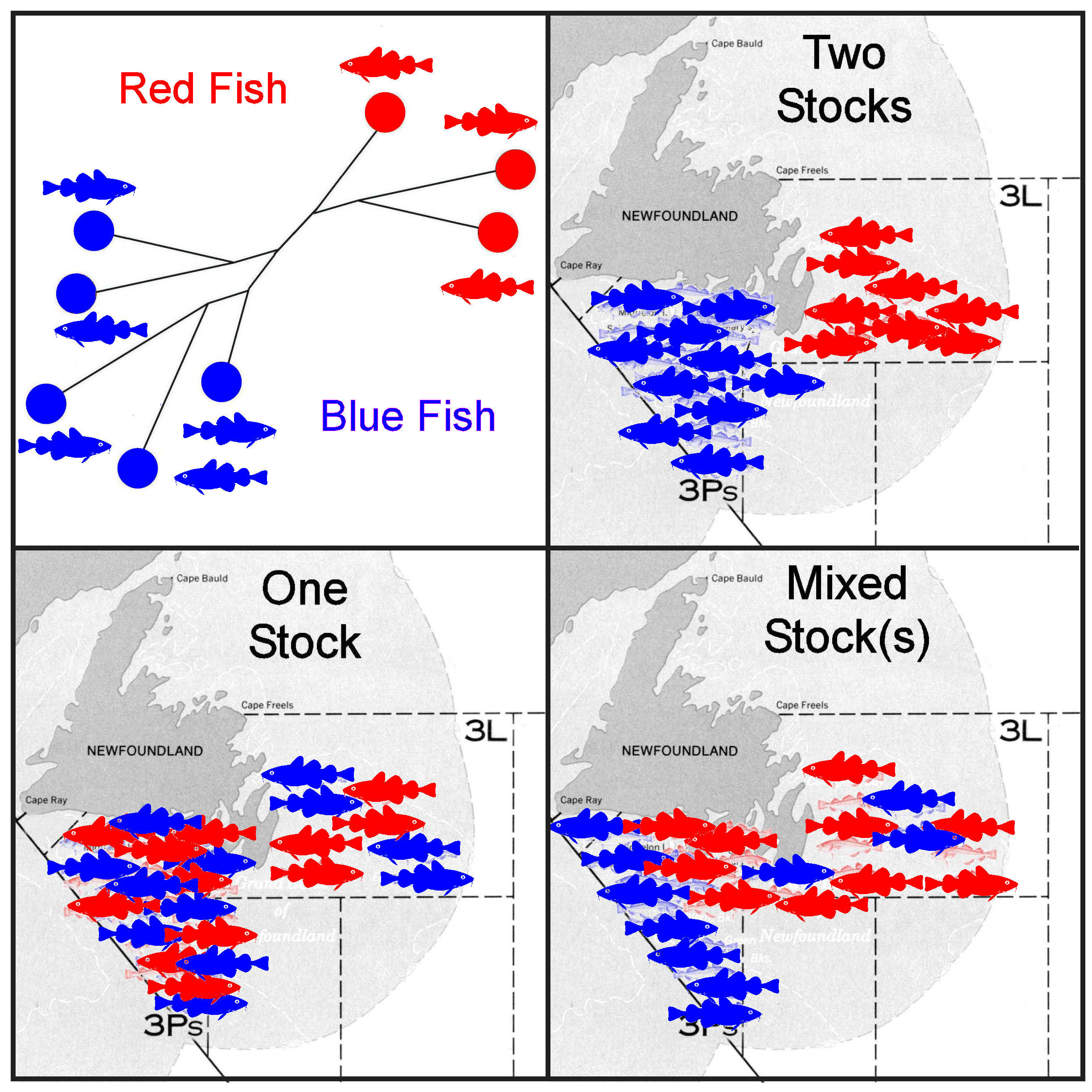 One Stock, Two Stocks ? Red Fish, Blue Fish, ....
One Stock, Two Stocks ? Red Fish, Blue Fish, ....
Genomic analysis of fish mtDNA identifies unique genotypes in each
fish, and shows the relationships among them (top left). There are two genetic lineages
within the species: all "red" fish are more closely related to each
other than any are to "blue" fish. If the two lineages occur in isolation in two separate geographic locations (top right), fish found in 3Ps and 3L are "genetically distinct" stocks. Fish in 3Ps are recovering, fish in 3L are not. They can be treated as separate management units (DFO) or designatable units (COSEWIC). If the two lineages occur at equal frequencies in both geographic locations (bottom left), fish found in 3Ps and 3L are a single, genetically homogeneous stock. Despite differences in relative abundance, what affects one part of the stock, affects the other, and the fish cannot be managed or designated independently. If the two genetic lineages occur at different frequencies in each geographic location (bottom right), fish found in 3Ps and 3L may be "genetically distinctive."
The degree and pattern of genetic distinctiveness can be measured.
Depending on the degree of mixing and the rate of exchange of fish
between geographic zones, they may or may not behave as independent
stocks. For example, if recovery of total numbers in 3L is dependent on localized spawning success of "blue" fish in 3Ps, allowable catches in the two zones cannot be set independently.

